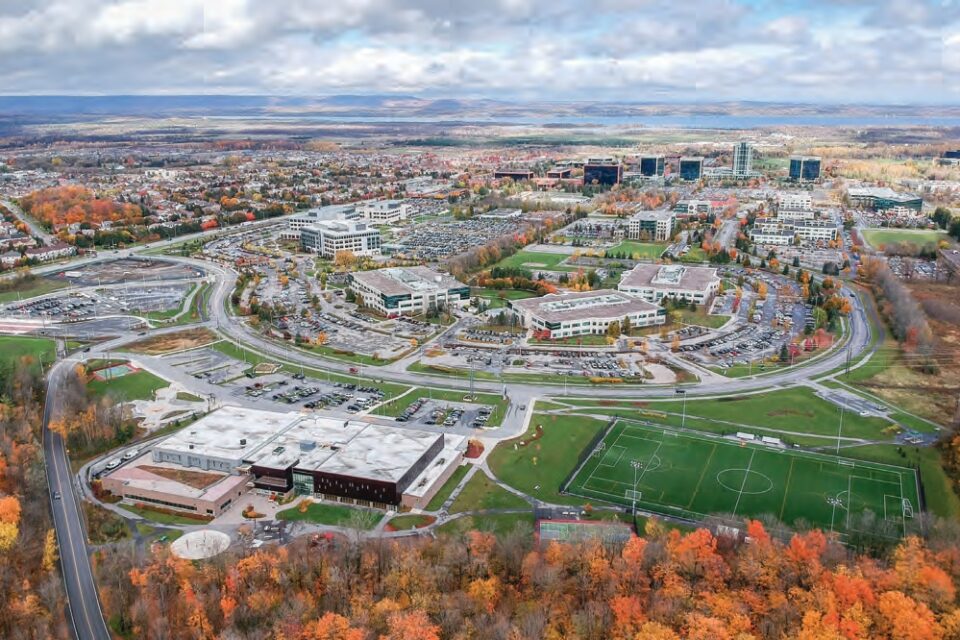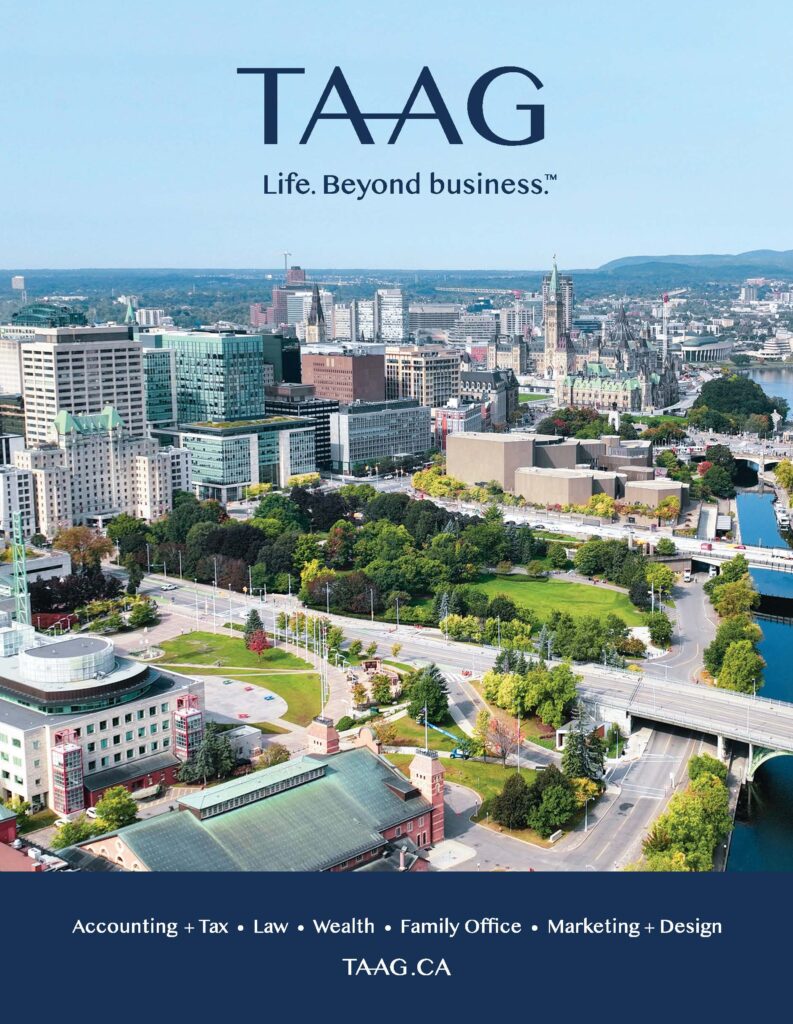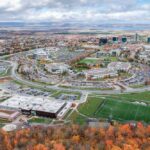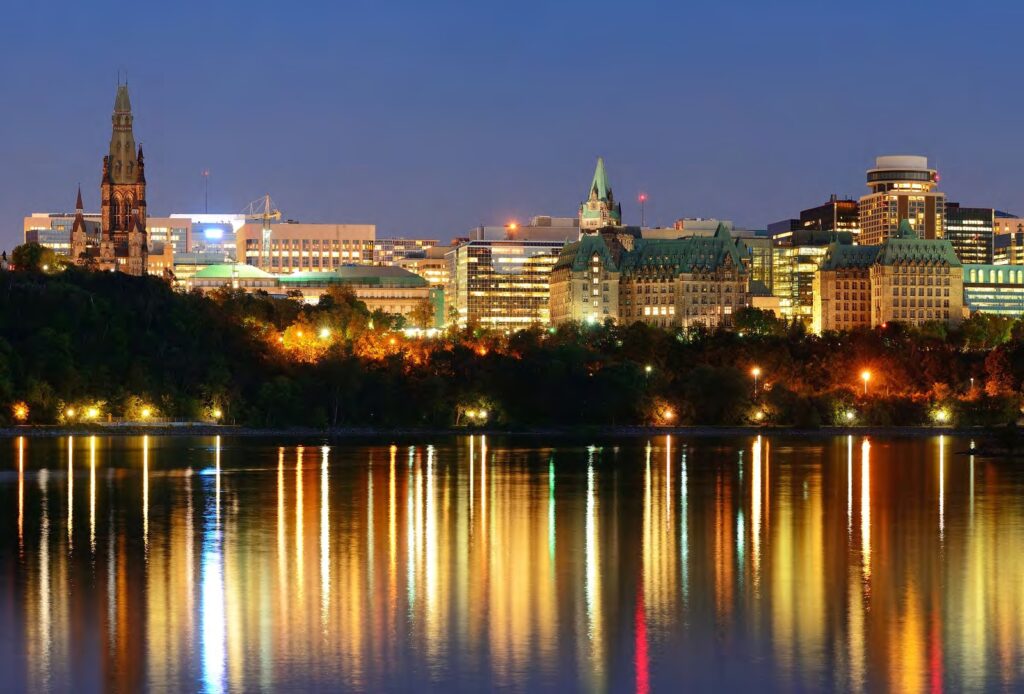The Kanata North Green Energy Resilience District

The Kanata North Tech Park
THAT CROWN JEWEL is the 550-hectare Kanata North Tech Park. With established multinationals like Nokia, Ericsson Canada, Ciena, Cisco, Nordion, Sanmina, Jabil Canada, and TÜV SÜD Canada and innovative startups like Ranovus, the Park’s 570 companies and state-of-the-art facilities already bring more than 33,000 jobs and $13 billion in annual activity to the local economy. Designated as a Special Economic District by the City of Ottawa, the Tech Park is poised for continued growth and economic opportunity as more people and companies locate there to live, work, play and innovate.
Canada’s largest tech park is working to attract new businesses to boost the local economy and reinforce Canadian economic sovereignty. But like other jurisdictions across North America and beyond, Kanata North is learning that “energy is the new gold”.

Energy-saving ice storage tanks at Cisco’s campus in Ottawa. (Source: Cisco)
Artificial intelligence, high tech manufacturing and other energy- intensive technologies in cutting edge research labs are driving exponential growth in power demand. Energy can account for up to 30% of a company’s operating cost, adding up to millions of dollars per year.
Small wonder that access to reliable, high-quality, affordable and sustainable energy is the first question prospective new investors and site selectors ask.
If they don’t get the answer they want, it can also be the last question a destination hears.
Which is why clean energy is an area where Kanata North is positioning itself to lead, compete, and win.
A Green Energy Resilience District is where serious money can be saved, earned and invested. It’s where companies can reduce operational costs through energy efficiency, better protect themselves from power outages and fluctuations, avoid power generation and transmission costs, and generate revenue from energy services they offer neighbouring businesses.
The Kanata North Business Association (KNBA), in partnership with the Ottawa Climate Action Fund (OCAF) and Hydro Ottawa, is seizing this transformative opportunity with an integrated suite of green energy solutions that will meet the Tech Park’s demand for energy services in a least-cost, low-carbon, resilient and timely manner. The Green Energy Resilience District is expected to incorporate a range of technologies and systems including deep energy efficiency, solar, thermal and electric storage and networks, as well as smart energy management.
Ideas Into Action
In August 2023, OCAF made the case for integrated energy solutions that maximize economic and environmental value and are ready to weather the next storm, heat wave or grid outage.
Now, Tech Park companies are taking the lead: Nokia on battery storage, Cisco on ice storage, KRP on energy efficiency and others exploring onsite solar. The opportunity ahead is to replicate, scale and integrate these and other solutions right across the Park, meeting short-term demand while laying the groundwork for district energy solutions that prevent lock-in of higher-carbon, higher-cost, less resilient energy.
As a major step down that road, Hydro Ottawa and OCAF are funding two studies: a set of future growth scenarios for economic activity and energy demand growth in the Park, and an assessment of the efficient, reliable technologies that can best ramp up quickly to deliver resilient, high-quality energy services and power supply.
Together, the studies will scope the opportunity in the Tech Park and identify key barriers and enablers for rapid introduction of a Green Energy Resilience District, such as virtual net metering, power sharing from energy storage and local zoning updates.
The first contract was awarded to Colliers Project Leaders earlier in the spring. The second RFP will be issued soon.

A rendering of a planned battery storage system at Nokia’s Kanata North campus
The Stakes Couldn’t Be Higher
As the community balances between powerful business momentum and deep economic uncertainty, the stakes behind this initiative couldn’t be higher.
The Green Energy Resilience District is our community’s best hedge against uncertainty—from business continuity in an era of accelerating climate disruption, to volatile energy costs that may rise due to economic and geopolitical circumstances. And it builds upon Ontario’s clean energy advantage which already helps attract new investment, especially from multinational companies with energy efficiency and net zero deadlines.
We can save millions of dollars and attract billions more in investment by pursuing integrated, local energy solutions. As other sectors of the economy struggle through the recent headwinds, Kanata North is poised for continued expansion, creating high-value jobs and solidifying our province’s standing as a global leader for information technology, artificial intelligence and advanced energy.
We are thrilled to have embarked on this strategic partnership to make the Green Energy Resilience District vision a reality. This compelling opportunity feeds right into OCAF’s strategic imperative of building up Ottawa’s Green Pipeline of local low-carbon investment opportunities that grow businesses and create good local jobs for decades to come.






















